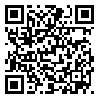BibTeX | RIS | EndNote | Medlars | ProCite | Reference Manager | RefWorks
Send citation to:
URL: http://journal.rums.ac.ir/article-1-1173-en.html
Studying the Correlation of Different Age Groups on the Role of Motional Control Standards and Anthropometric Indices
S. Imanipour[1], S.E.Hashemi Sheikhshabani[2], P.Shafinia [3], A. Qhotbivarneh[4]
Received: 19/05/2012 Sent for Revision: 28/08/2012 Received Revised Manuscript: 06/08/2013 Accepted:16/09/2013
Background and Objective: Age is related to motion coordination. It is necessary to distinguish age variations to recognize functional changes in human. The correlation between these indices has not been studied in structural equations model; however, in much performed studies about performing clinical motion function standards, the effects of these variations have been studied to perform functional exams and also the correlation between age and anthropometric indices. Hence the correlation between motional function standard and anthropometric indices and age were investigated in this study.
Materials and Methods: This cross-sectional study was performed by multiple measurements on 133 participants aged 18- 59 years old and by available sampling method. The data were collected using anthropometric factors measuring and recording the duration of clinical balance tests performance. Three models were evaluated separately. The method of the structure equations modeling was used to analyze data.
Results: The third model indicated suitable fitting of data better than the other models (RMSEA = 0.038, CFI = 0.992), X2 was not significant (p= 0.260). Also in the three models, standard coefficient were significant between the path way of functional tests performance and age (0.540), and between the path way of age and anthropometric indices (0.340).
Conclusion: The age affects clinical balance test and anthropometric indices. Therefore, it is necessary to consider the index of age as a standard which influences tests performance to study clinical diagnosis in order to evaluate sport damages such as head damage.
Key words: Age, measures of motor function, Anthropometric index, Structural model
Funding: This research was funded by Shahid Chamran University (Ahvaz-Iran).
Conflict of interest: None declared.
Ethical Approval: The Ethics Committee of Shahid Chamran University of Physical Education Science approved the study
How to cite this article: Salmanian: Imanipour S, Hashemi Sheikhshabani SE, Shafinia P, Qhotbivarneh A. Studying the Correlation of Different Age Groups on The Role of Motional Control Standards and Anthropometric Indices. J Rafsanjan Univ Med Sci 2014; 13(1): 83-96. [Farsi]
[1]- MSc in Exercise Physiology, Dept of Exercise Physiology, Shahid Chamran University, Ahvaz, Iran
(Corresponding Author): Tel: (0791) 2260610, Fax: (0791) 2260610, E-mail: s.emanipour@yahoo.com
[2]- Assistant Prof Physiology, Shahid Chamran University, Ahvaz, Iran
[3]- Assistant Prof, Dept. of Exercise Physiology, Faculty of Education and Psychology, Shahid Chamran University, Ahvaz, Iran
[4]- Academic Member, Dept. of Exercise Physiology, Faculty of Education and Psychology, Shahid Chamran University, Ahvaz, Iran
Received: 2011/12/11 | Accepted: 2013/09/30 | Published: 2014/05/21
| Rights and permissions | |
 |
This work is licensed under a Creative Commons Attribution-NonCommercial 4.0 International License. |






